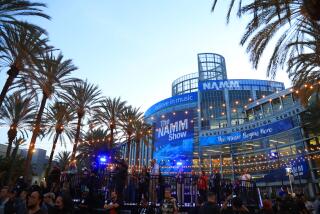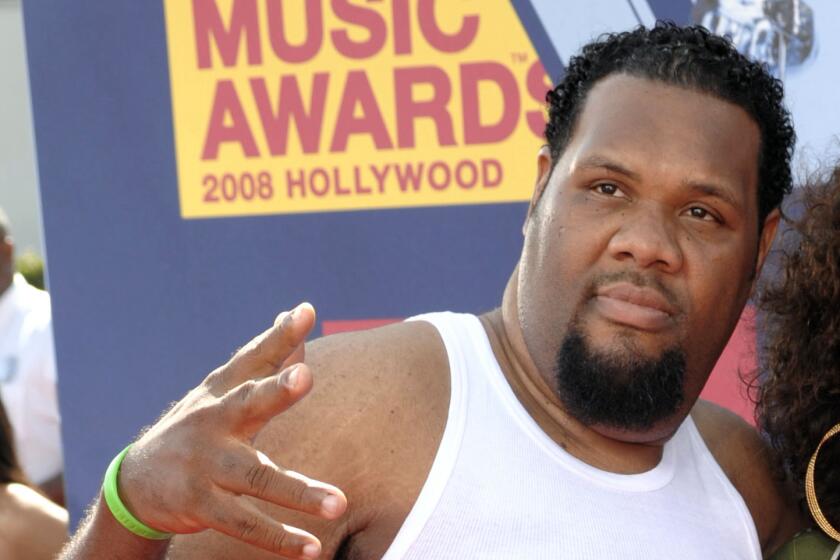LOOKING FOR NEW SOUNDS OF MUSIC
In 1983, the introduction of technology allowing the linking of electronic synthesizers with computers shook the music world like an atomic explosion. At the 17th Winter Market convention of the National Assn. of Music Merchants (NAMM) this weekend at the Anaheim Convention Center, the nation’s instrument manufacturers and retailers did their best to see that fallout from that explosion continues to spread and touch as many people as possible.
Without any major innovations such as 1983’s Musical Instrument Digital Interface (MIDI), which allows synthesizers and computers to communicate with each other, this year’s convention drew more than 500 exhibitors and 25,000 visitors to explore product refinements, new applications for technology and methods of boosting business in the $2.5-billion musical instrument industry.
In the wake of statistics showing a steady decline in the number of Americans who play music, the association announced that it will sponsor a series of public service-type commercials in March aimed at encouraging more youths to take up music. Built around the theme “If You Really Love Music, Play It,” a half-dozen 30-second ads scheduled to air on MTV will feature rock guitarist Yngwie Malmsteen talking about various ways music has affected his life.
“It’s a new step for us,” said association president Alfredo Flores. “Up to this time, NAMM’s functions have not included the generic promotion of music. Music is more and more important to Americans today, but fewer and fewer Americans are playing music. A lot of people have a play-practice type conception of music. We are trying to show how much fun music can be; that it’s not all study. Study is important, yes--but the message we are trying to convey is that music is the best indoor sport there is.”
Exhibitors’ enthusiasm for the new promotion was proportional to the degree to which they expect it will help their businesses. Manufacturers of guitars and drums--instruments whose popularity has increased most in recent years because of their high visibility in rock videos--predicted great things from the ads.
But those involved with band instruments such as clarinets, trumpets and trombones were less optimistic.
“It might help down the line if they have some highly visible professionals using horns,” said Joe Colantonio, Eastern states sales representative for Getzen Musical Instruments of Elkhorn, Wisc., which makes brass wind instruments. “Any exposure has got to help, but face it: Today is the day of electronics.”
Rapid technological advances have created a boom market for some and have made electronic musical instruments better and cheaper seemingly by the month, but they have dramatically cut into the sales of conventional organs and acoustic pianos whose sounds they emulate.
“Electronic organs have taken it on the chin,” said Layton Rawlins, vice president of marketing for Schafer & Sons, the Dana Point-based piano and organ maker. “The manufacturers got too technical and forgot about people. Their mistake was that they took the fun out of music. They started selling bricks and mortar instead of selling a dream. If it’s a good dream, people are not concerned with how much it costs.”
One hot topic was the coming of new equipment that will allow standard pianos to hook up with home computers.
More to Read
The biggest entertainment stories
Get our big stories about Hollywood, film, television, music, arts, culture and more right in your inbox as soon as they publish.
You may occasionally receive promotional content from the Los Angeles Times.









